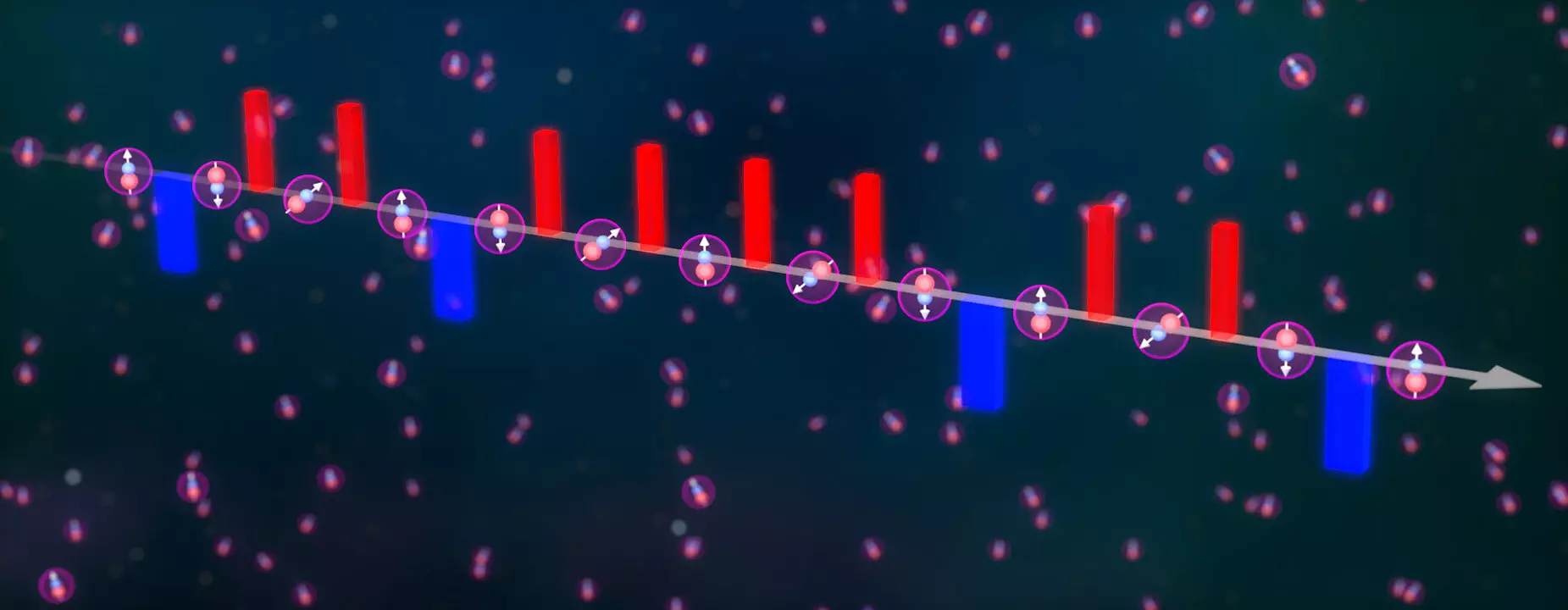The realm of quantum mechanics offers a fascinating lens through which we can examine the underlying principles that govern the universe. Among these principles, the interaction of quantum spins is critical, as it contributes to the fascinating behaviors exhibited in phenomena such as superconductors and magnets. However, replicating these interactions in laboratory settings has long presented challenges for physicists. Recent advancements have emerged that leverage innovative techniques to manipulate quantum systems with precision, paving the way for enhanced experimentation and potential applications in quantum technology.
A group of researchers led by Dr. Jun Ye from JILA and the University of Colorado Boulder has recently made strides in this area by harnessing a technique known as Floquet engineering. This method relies on periodic microwave pulses to control and manipulate the interactions between ultracold potassium-rubidium molecules, creating a system particularly suited for studying essential magnetic behaviors. By employing this “quantum strobe light” approach, scientists can achieve selective control over various quantum effects, similar to how a filmmaker might control the speed of slow-motion visuals or static scenes.
Unlike traditional setups, which limited the frequency and number of manipulation pulses, the new approach incorporates an advanced arbitrary waveform generator. This innovation allows for the application of thousands of microwave pulses, thereby facilitating a more comprehensive investigation into molecular interactions. As pointed out by JILA graduate student Annette Carroll, the flexibility introduced by this technology enables researchers to eliminate single-particle noise while simultaneously refining the intricacies of molecular interactions.
A significant component of this groundbreaking research is the encoding of quantum information within the potassium-rubidium molecules’ lowest rotational states. By subjecting these molecules to initial microwave pulses, the team managed to establish a quantum superposition of specific “spin” states. The subsequent application of Floquet engineering allowed the researchers to tune interactions, directed by well-defined quantum spin models like XXZ and XYZ, which provide critical insights into how spins evolve and interact.
To put it simply, envisioning the shifts in molecular interactions as a choreographed dance helps to grasp the complexities involved. Each molecule shifts its spinning behavior based on the influence of its neighbors, much like dancers adjusting their movements to maintain harmony and synchronization. Through Floquet engineering, the team examined how these quantum spins adapt their “dance patterns,” aiming to replicate experimental outcomes obtainable through electric field adjustments but using a more sophisticated control mechanism for less symmetric interactions.
One of the most exhilarating discoveries in this research is the observation of two-axis twisting dynamics, a previously theorized concept. This method involves manipulating quantum spins along two distinct axes, generating highly entangled states. The implications of this finding extend to quantum sensing and precision measurement, which require systems with low uncertainty to produce reliable data in unreliable conditions.
Molecular interactions nurtured by two-axis twisting allow for effective generation of spin-squeezed states, which are particularly valuable in reducing quantum uncertainty. This means that while one component of a spin’s behavior is refined, another experiences an increase in uncertainty, further enhancing the sensitivity of quantum measurements. The thrill of identifying the initial signals of two-axis twisting was palpable for the researchers, indicating a promising new direction for entangled state verification.
While the work by Ye’s team at JILA represents a significant breakthrough in understanding and manipulating quantum systems, it is important to note that this is a collaborative endeavor. Teams like Professor James Thompson’s at JILA have taken different approaches to studying atoms, such as cavity quantum electrodynamics, yet arrived at similar discoveries regarding two-axis twisting. Such synergies in the scientific community highlight the interdisciplinary nature of contemporary quantum research.
Moving forward, the team’s most imminent goal is to refine detection techniques to convincingly demonstrate the generation of entangled states. Achieving this would mark another leap forward in the quest for robust quantum communication systems, ultimately transforming the landscape of technology as we know it.
In summation, breakthroughs in Floquet engineering and two-axis twisting measurement present new horizons for understanding quantum systems. As researchers continue to build on these foundations, the quest for harnessing the potential of quantum technology leads us toward an era of unprecedented advances in communication, computation, and beyond.


Leave a Reply